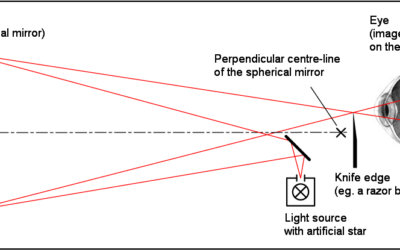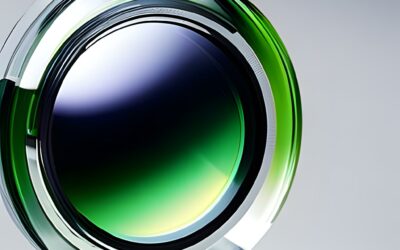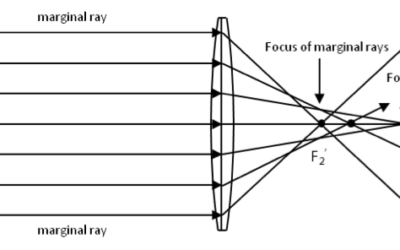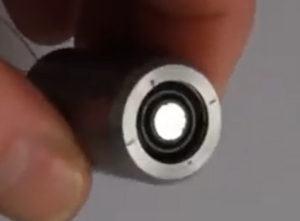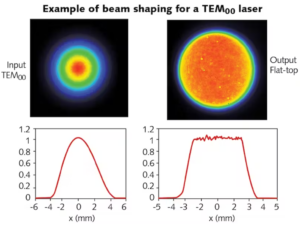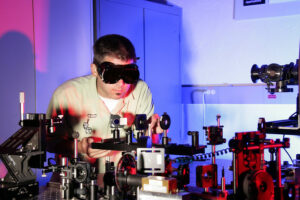Hello from Optics for Hire, where the topic of 3-D display has been coming up even more than usual. At the moment, the clouds over Arlington are trying to figure out how much snow to deposit on Mass Ave. Feels like the right mood to share a few of the things crossing my desk:
Good LinkedIn Groups for 3-D display:
Non-Glasses 3D Display Technology is moderated by Thomas Edwards, the VP Engineering & Development at FOX Networks Group. It seems to have a higher % of technical “meat” than some of the other autostereo groups which tend to be more self-promotional (about spatially multiplexed displays).
Stereoscopic Displays and Applications is affiliated with the SPIE-IS&T conference of the same name. But: discussions about more than the conference itself.
Need assistance designing a custom optic or imaging lens ? Learn more about our design services here.
Recent obsession: I wonder to what extent autostereoscopic cinema is feasible in 2012. Will the technological enabler be a many-projector system like Holografika‘s, a variant of a “specular” display , or the rebirth of mid-century techniques (doubt it)? My interest in this was recently rekindled by the movie Hugo’s depiction of Georges Melies building optical systems, filming entertaining content (movies!), and exhibiting them. Then again growing up in West Orange, NJ sort of primes one for that interest (T. A. Edison).
Speaking of autostereo cinema, I recommend the SD&A 2012 proceedings paper by Walter Funk. It’s available now through the SPIE Digital Library and has 80+ references. He discusses very early work, such as Maxwell’s real-image stereoscope, the Swan “Crystal Cube Miniatures,” and the development of parallax barrier and fly’s-eye lens arrays (Berthier, Jacobson, Ives, …).And that’s not all, page after page of references regarding the early days of autostereo cinema (1920s?), Noaillon’s work, theaters in France and the USSR.
Walter Funk, “History of autostereoscopic cinema,” Proc. SPIE 8288, 82880R (2012)
New conference. The OSA is experimenting with a new conference format, called “incubators.” They hope to encourage frank and less-guarded discussion amongst peers and competitors in these meetings with an interesting format: several expert panel discussions followed by lengthy discussion periods (each attendee table has a high-quality microphone). Last week, in DC, was the 3D Display Technology, Perception and Application Incubator Meeting, chaired by Nasser Peyghambarain, Mike Bove, and Hong Hua. This was a lot of fun; heck, it was the first optics meeting witness to a brief shouting match. About holo-pixels!
What new things did I learn there?
Henry Fuchs’s group made several random-hole autostereo displays (links, discussion)
His group also determined that you can reduce inter-Kinect interference for multi-Kinect systems by placing mechanical vibrators on each. That way, the only in-focus pattern seen by a Kinect is its own. The others are blurred.
Several folks are pursuing 360-degree tabletop displays. At Actuality we called these “theta-parallax-only” displays, or more jokingly, “Death Star displays.” E.g., Zheng Zhenrong of Zhejiang University (P.R. China) built a system reminiscent of this.
The MIT Media Lab’s Camera Culture Group, led by Ramesh Raskar, continues to innovate “computational displays,” such as their HR3D, Layered 3D, and Polarization Field displays that push attenuation-based systems to their limits. What’s next? Tensor displays. Ramesh was a panelist, summarizing the group’s work, and Doug and Gordon each presented the advances they’re creating.
Jannick Rolland (Univ. Ariz.), Kevin Thompson (Synopsys / ORA), and Hong Hua continue the effort to design less-obtrusive head-worn displays. Free-form optics!
What do we do about the seemingly stalled improvement in the space-bandwidth product of SLMs? Paraphrasing Darrel Hopper (USAF, Wright Pat), “We need holo-pixels!”. Paraphrasing Fuchs, “Make do with what we have, by putting more smart software in the loop, like the Camera Culture displays!” Two panelists actually offered plots of pixel-count versus year, to enable us to guess when holo-TV might be feasible: Masahiro Yamaguchi supposed that we’ll have 10″ 30-degree viewing in 2023, and 40″ 90-degree viewing in 2037.
Mike Bove (MIT Media Lab) mentioned that his group continues work on a desktop holographic video displayusing a custom lithium niobate waveguide component. Ready to be demonstrated this summer, perhaps? At ISDH, I wonder (25-29 Jun 2012)?
What cues cause one’s eyes to focus? And what’s up with jumping spiders and their 4-layer retinas?
It is indeed possible to consume a post-conference 14-course Turkish dinner.
Speaking of MIT’s contributions to holographic display, Mark Lucente and Mike Klug showed enticing videos of Zebra Imaging’s ZScape displays. Also, some footage from (1980s?) Media Lab. Digging through YouTube, I found them and also some wonderful clips of the late Stephen Benton.
(1992) BBC documentary re: holovideo (YouTube)
(1985) Synthetic Holography, a Media Lab videodisc (YouTube) Check out 3:04 for Benton’s description of their alcove hologram.
French autostereoscopic cinema
Interview and frankly amazing footage of le cyclo-stereoscope(1940s? 1950s?). No, really, check it out. Giant spinning rods! Popcorn! What could go wrong?
Surveys of the field
I am considering adding a page to my personal website with suggested readings for new researchers in autostereo. Until then, here are a few:
Backgrounder:
M. Halle, “Autostereoscopic displays and computer graphics,” Computer Graphics, ACM SIGGRAPH, 31(2), May 1997. LINK
Surveys of recent advances: These two have different emphases:
N. S. Holliman, N. A. Dodgson, G. E. Favalora, and L. Pockett, “Three-Dimensional Displays: A Review and Applications Analysis (invited),” IEEE Trans Broadcasting,57(2), 362-371 (June 2011). Available via IEEE, or here.
J. Hong, Y. Kim, H.-J. Choi, J. Hahn, J.-H. Park, H. Kim, S.-W. Min, N. Chen, and B. Lee, “Three-dimensional display technologies of recent interest: principles, status, and issues (invited),” Appl. Opt. 50, H87-H115 (2011). (Optics InfoBase)
And… workshop on computational displays!
Hear-ye, hear-ye! The CVPR 2012 Workshop for Computational Cameras and Displays has issued a call for papers. See here.
G-Fav
ps. Look into the eyes of the Bokode Owl (Wait for it…) Click “show more” if you’re not up on bokodes.

